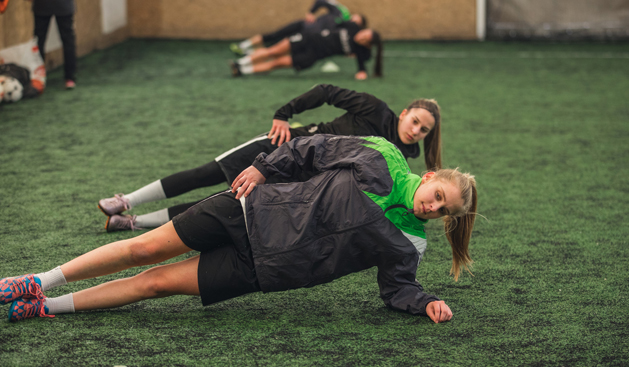Fitness Routine for Off-Season
Being able to catch a break within or after an intense season of soccer can be a good opportunity for players to recreate themselves. After playing many games, the off-season is the time to recover and be refreshed. With some distance from the pressure of weekly competition, soccer players take advantage of the off-season to recharge their batteries. Starting the season fresh and firing is the reward. Keeping fit during the off-season is a choice and must be consciously backed up by being faithful to specific activities. After a week or two within which players may give themselves license to eat what they want, the hard work of maintaining physical shape must resume in earnest. Routines for off-season training differ by teams and coaches; there are no definite standards. However, it is agreed that there are key aspects of performance that should be focused on to keep one’s skills sharp.
Technical and Tactical Training
An important aspect of off-season training is to improve one’s technical abilities. The off-season should be used to practice more precise passing, accurate shooting, 1v1 attacking skills, heading and other activities performed on the ball. Positional awareness is a tactical quality to have in soccer and while it is not something that can be practiced in isolation, a player could device means for better appreciating the importance of being in the right positions on a soccer field.
Agility
Playing so many games in a season takes its toll on a player’s body, with the possibility that a player may be unable to move as quickly as they should towards the end of the season. Agility exercises help the player to regain that sharpness and ease of quick movement. Effective soccer players should be able to run and change directions with the ball without any loss to momentum. Activities that help improve agility include box drills, ladder shuffle and jumping rope.
Cardiovascular Endurance
Every player wants to be able to be as effective in the last minutes of a game as they were at the start. To achieve this, cardio training during off-season is very beneficial. It can consist of long-distance running and aerobic exercise, or high-intensity exercises combined with workouts and periods of rest. Good cardio training conditions the body to withstand long stretches of activity, keeping the body in optimal shape to produce top performance. A cardio training session should be designed to simulate game conditions. As heat and cold affect the heart’s functions during a game, the expected weather during games should be taken into account when planning cardio sessions. This is to make sure that the player prepares the body to adapt to the demands that will be placed on the organs and muscles.
Routines for Age groups
Because bodily features differ by age, the type and intensity of fitness activities for the off-season also differ by age. Whereas some activities are prescribed for all age groups, more physically demanding exercises are reserved for those whose bodies can bear the strain of longer workouts.
U6 – U8
Players in this category engage in physical and technical exercises. The physical involves exercises to develop speed, agility, coordination and balance, perception and awareness, and basic motor skills, while the technical consists of dribbling, passing and receiving drills. 1v1 and 2v1 attacking skills are also part of the technical exercises appropriate for this category.
U9 – U12
Unique technical exercises for this age category include receiving to turn, shooting, ball control, 1v1 defending and shielding the ball. In addition to the physical exercises mentioned above, drills for reaction and acceleration are added for players in this category. Importantly, a tactical component is introduced at this stage, featuring exercises for possession, playing out from the back, combination play, finishing in the final third, as well as defensive principles.
U13 – U14
Building on the basic tactics in the previous category, training at this stage includes exercises for defending as a team via zonal defending and attacking principles are introduced. Technical exercises for this stage include running with the ball and back control, aerial control and heading. There is a greater focus on aerobic capacity and power for players in this category.
U15 – U18
Players at this stage are ready for the first team. Their fitness drills are more advanced than those of other stages. Tactical training features exercises in counter-attacking, retreat, recovery, and pressing. Crossing and finishing is introduced to complement other technical skills learnt, while explosive strength and acyclic speed are added to the routine of physical drills.
Conclusion
These activities, when practiced in a team, are indispensable for achieving a worthwhile off-season. Players who are able to keep their bodies in shape by appropriate dieting and adequate rest will get the best out of it and be ready for success in a new season.
REFERENCES
The Guide to Off-season training https://www.amplifiedsoccerathlete.com/coachguide/the-guide-to-off-season-training
5 Soccer Agility Drills for Kids https://www.activekids.com/soccer/articles/5-soccer-agility-drills-for-kids
Cardio training for soccer https://championsid.com/cardio-training-for-soccer/
US Soccer Planning and Training http://resources.ussoccer.com/n7v8b8j3/cds/downloads/Part%204%20-%20Planning%20and%20Training%20U.S.%20Soccer%20Coaching%20Curriculum.pdf


